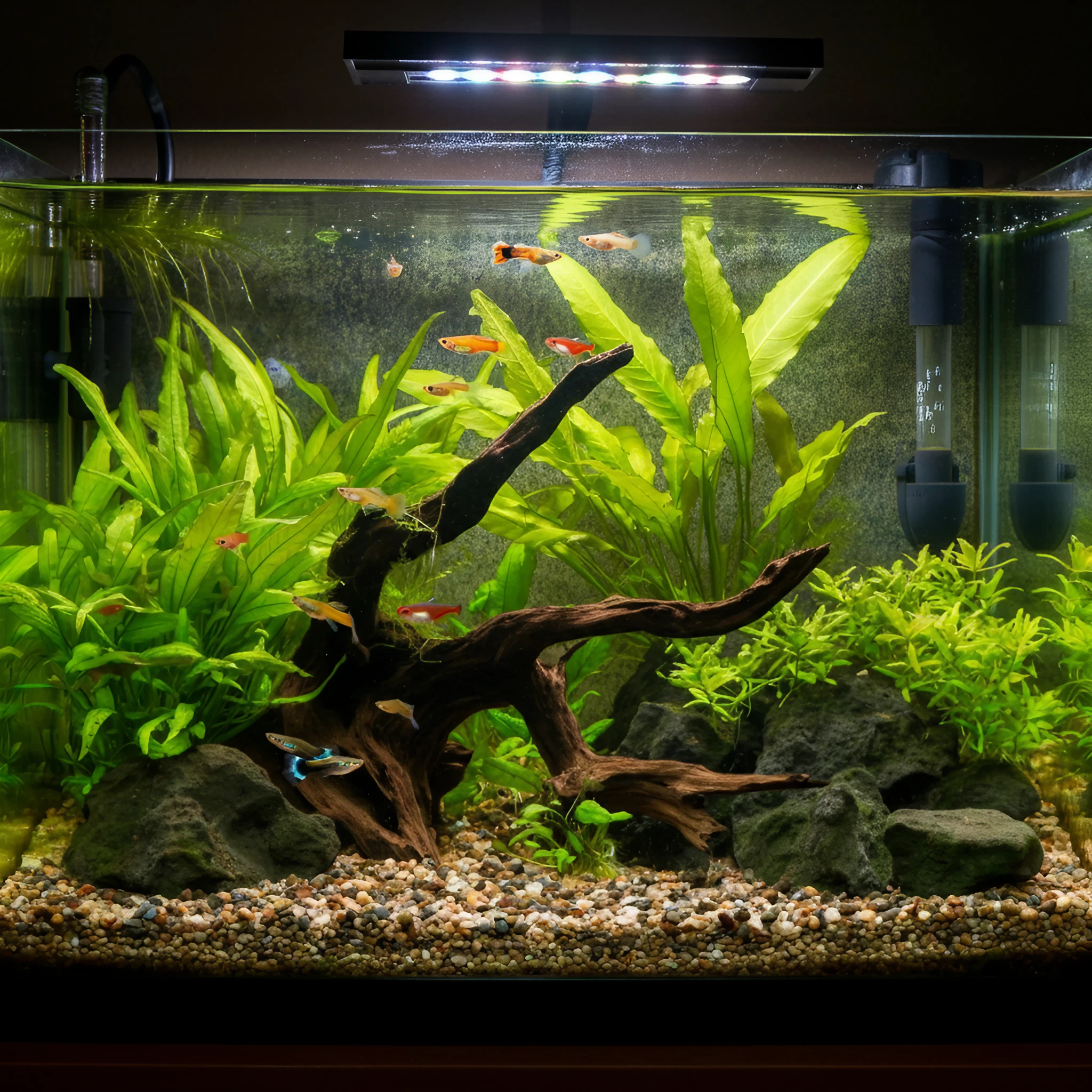Have you ever imagined bringing a piece of soothing nature into your home? Freshwater aquariums are more than just decorative pieces—they're living, breathing art installations that bring joy, beauty, and even health benefits to your life. Whether you're a beginner or looking to upgrade your skills, this guide will walk you through the 10 essential steps to set up a freshwater tank that thrives.
By the end of this guide, you’ll know exactly how to create a thriving aquatic environment, avoid common pitfalls, and build a stunning focal point in your home or office.
Why Choose a Freshwater Aquarium?
Freshwater aquariums are often the first choice for both novices and experienced aquarists—and for good reason! Here's why a freshwater tank might be the perfect starting point for your aquatic adventure:
- Affordability: Freshwater aquariums are typically less expensive to set up and maintain than their saltwater counterparts.
- Beginner-Friendly: With fewer technical hurdles like maintaining salt levels and specialized equipment, they’re ideal for first-timers.
- Versatility: From vibrant guppies to gracefully planted tanks, freshwater allows for endless customization.

Quick comparison: A saltwater tank requires careful ecosystem building and components like protein skimmers. Freshwater setups are simple, requiring less upkeep and gear.
If simplicity and stunning visuals are what you’re after, freshwater aquariums are your go-to option.
FAQs About Starting a Freshwater Aquarium
What Size Tank Should I Start With?
For beginners, a 20-gallon aquarium is the sweet spot—not too small to manage water quality, yet compact enough for easy maintenance.
What Equipment Do I Need?
Here’s your checklist for essential items:
- Aquarium (20 gallons or larger)
- Filter and heater
- Thermometer for monitoring water temperature (aim for 75–80°F depending on fish species)
- Substrate (gravel or sand)
- Lighting to highlight your fish and plants
- Test kit to monitor water conditions
How Much Does It Cost?
The cost depends on size and scale, but here’s an approximation:
- Tank and equipment: $150–$300
- Fish and plants: $50–$100
- Monthly maintenance (food, tools, etc.): $20–$50
This manageable investment guarantees priceless rewards!
10 Steps to Set Up Your Freshwater Aquarium
Step 1: Choose the Right Location
Pick a flat, stable surface out of direct sunlight to prevent algae growth. Make sure it’s near a power source but away from heavy foot traffic for reduced stress on your fish.
Step 2: Clean Your Tank and Equipment
Wash your tank, substrate, and decorations with non-toxic, fish-safe materials. Avoid soap or harsh chemicals that can harm aquatic life.
Step 3: Add Substrate and Decorations
Lay down 2–3 inches of substrate like gravel or sand for a natural look. Add decorations carefully, ensuring no sharp edges that might injure your fish.
Step 4: Install Filter and Heater
Set up your filter and heater according to manufacturer instructions. These are crucial for maintaining clean water and a stable temperature.
Step 5: Fill Tank With Treated Water
Fill your aquarium with dechlorinated water. Use conditioners to balance pH (aim for 6.5–8 depending on fish species).
Step 6: Cycle the Tank
This step is non-negotiable! Allow beneficial bacteria to grow by running the tank for 2–4 weeks without fish. These bacteria break down harmful toxins like ammonia.
Step 7: Select Fish Species
Start with hardy beginner species like guppies, tetras, and mollies. Avoid overstocking—use the rule of 1 inch of fish per gallon.
Step 8: Introduce Fish Gradually
Acclimate your fish to their new environment by floating their bag in the tank for 15–20 minutes. Slowly mix tank water into the bag before releasing them.
Step 9: Routine Maintenance
Dedicate 20–30 minutes weekly to aquarium care:
- Partial water changes (25%)
- Filter cleaning as needed
- Remove excess food to prevent water quality issues
Step 10: Monitor and Troubleshoot
Watch for issues like algae blooms or cloudy water. Test water weekly to catch potential problems early.
With these steps, you’ll have a thriving freshwater aquarium in no time!
Common Mistakes to Avoid
Even the best intentions can lead to errors. Here’s what not to do:
- Overstocking the tank (leads to stress and poor water quality).
- Skipping the cycling process, which is crucial for fish health.
- Overfeeding (clouds water and creates ammonia spikes).
By avoiding these, you’ll save yourself—and your fish—unnecessary headaches.
Bonus Tips for Success
Want to elevate your aquarium game? Here are a few extra tips:
- Install Live Plants: Adds natural oxygenation and enhances aesthetics.
- Invest in Backup Power: Essential for long-term tank stability during outages.
- Research Fish Behavior: Ensure species compatibility to avoid conflicts.
These tips will take your aquarium from great to show-stopping!
Your Freshwater Aquarium Awaits
Setting up a freshwater aquarium isn’t just a project—it’s a fulfilling experience that brings joy, beauty, and tranquility into your life. By following these 10 steps, you’ll create a thriving aquatic habitat that reflects your creativity and care for nature.
Why wait? Start your aquarium today and share your setup with our community! We’d love to see your masterpiece.
Have questions? Drop them in the comments below or connect with fellow enthusiasts for more advice.